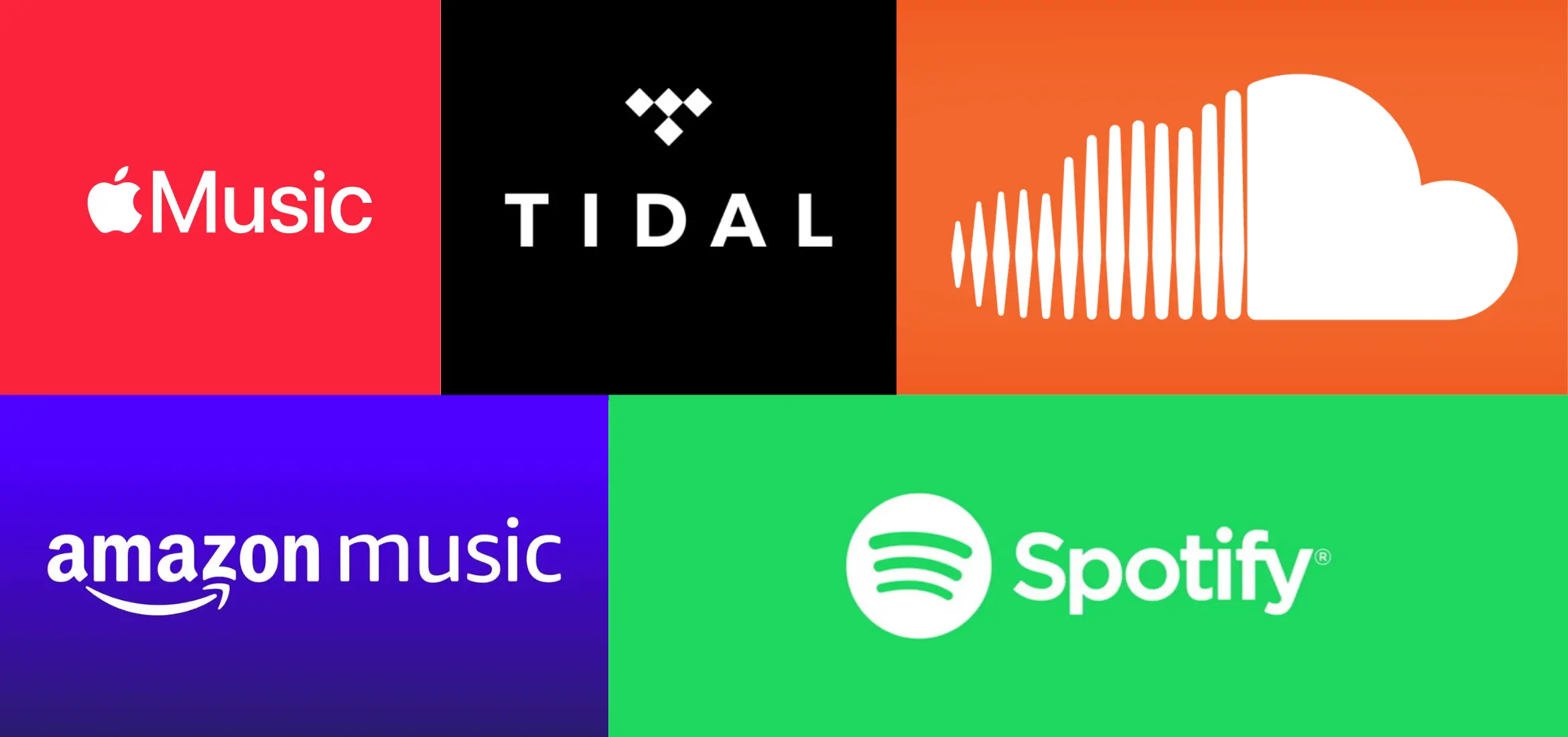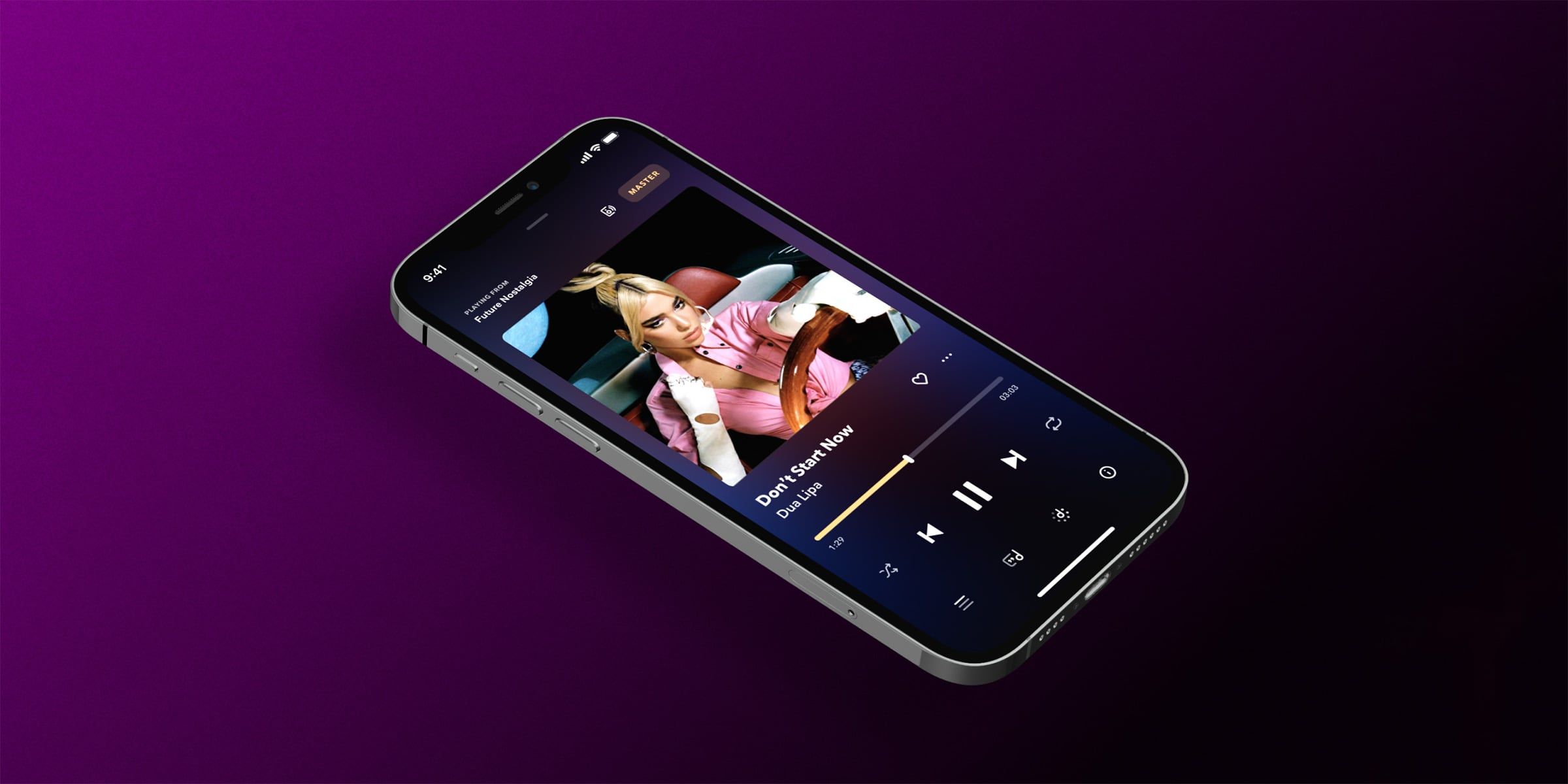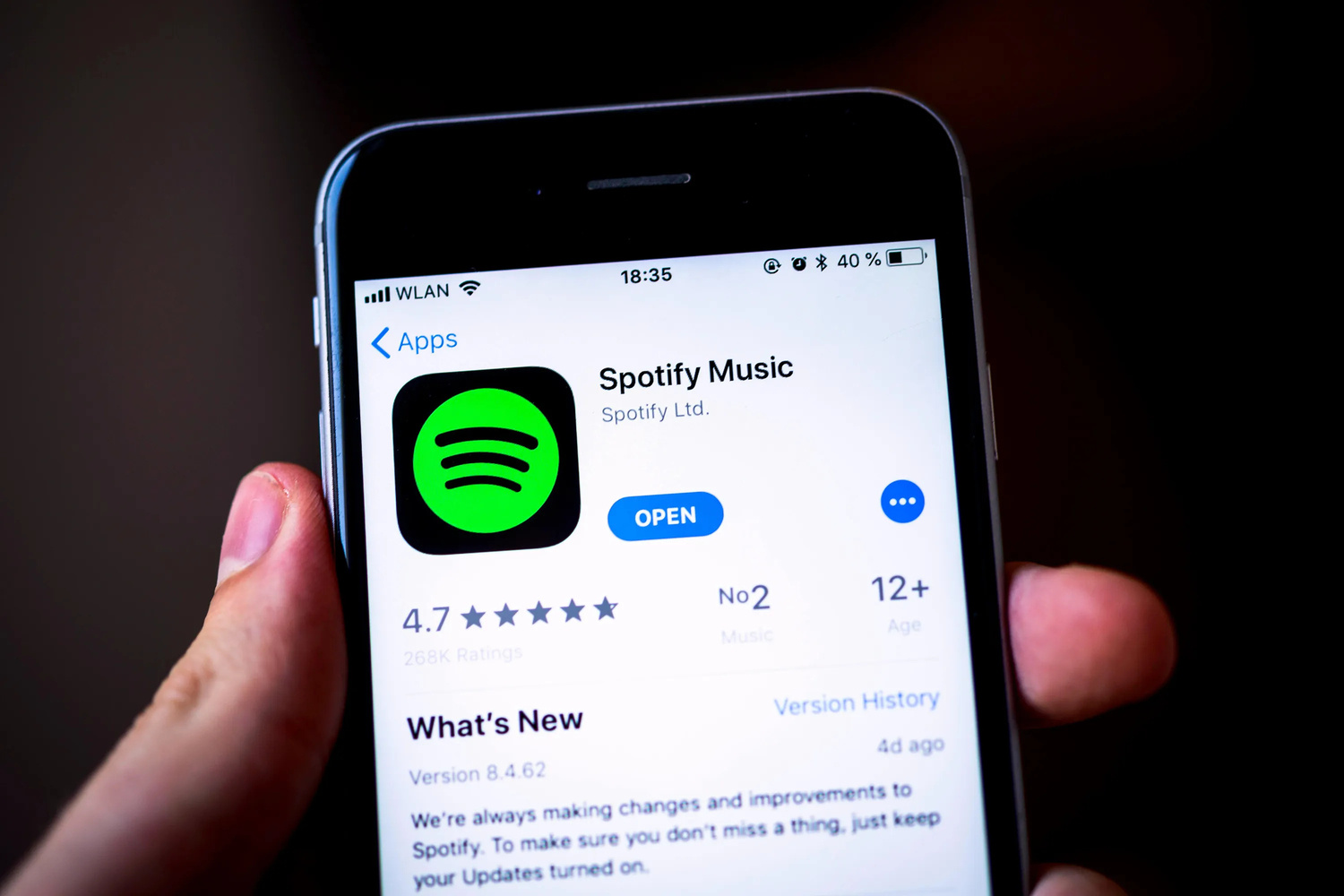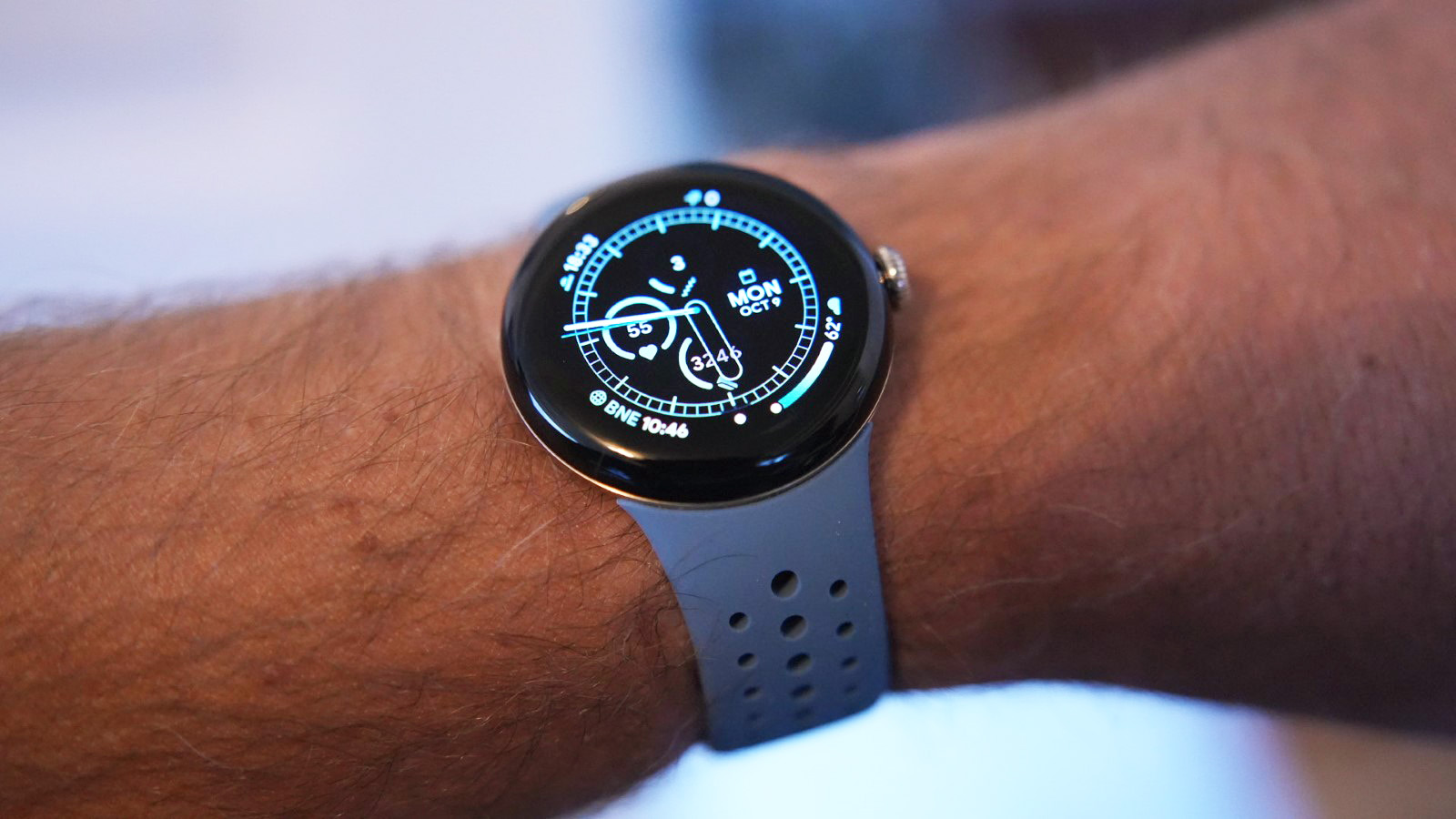Home>Devices & Equipment>Streaming>What Is Music Streaming


Streaming
What Is Music Streaming
Published: March 8, 2024
Discover the convenience and benefits of music streaming services. Learn how streaming has revolutionized the way we listen to music. Explore the world of streaming today!
(Many of the links in this article redirect to a specific reviewed product. Your purchase of these products through affiliate links helps to generate commission for AudioLover.com, at no extra cost. Learn more)
Table of Contents
Introduction
Music streaming has revolutionized the way we consume music, offering unparalleled convenience and access to an extensive library of songs at our fingertips. With the rise of digital technology, music streaming has become an integral part of our daily lives, shaping the music industry and redefining the concept of music ownership.
In the past, music enthusiasts relied on physical formats such as vinyl records, cassette tapes, and CDs to enjoy their favorite tunes. However, the advent of music streaming services has transformed this traditional approach, allowing users to instantly access millions of songs through online platforms. This shift has not only altered the way we listen to music but has also influenced the dynamics of the music industry, impacting artists, record labels, and consumers alike.
The concept of music streaming revolves around the seamless delivery of audio content over the internet, enabling users to listen to their preferred tracks on various devices, including smartphones, tablets, and computers. This accessibility has transcended geographical boundaries, allowing individuals from different corners of the world to explore diverse musical genres and discover new artists with ease.
As the demand for on-the-go entertainment continues to soar, music streaming has emerged as a dominant force in the digital realm, offering a vast array of benefits to music enthusiasts. Whether it's creating personalized playlists, exploring curated recommendations, or enjoying live performances through streaming platforms, the possibilities are endless.
In the subsequent sections, we will delve deeper into the history of music streaming, explore the mechanics behind its operation, examine the different types of music streaming services available, and weigh the advantages and disadvantages of this innovative mode of music consumption. Additionally, we will cast a glimpse into the future of music streaming, shedding light on the evolving trends and technological advancements that are set to shape the industry in the years to come. Join us on this captivating journey through the realm of music streaming, where the harmonious fusion of technology and artistry continues to captivate audiences worldwide.
History of Music Streaming
The history of music streaming can be traced back to the late 1990s when the digital revolution began to reshape the music industry. The emergence of file-sharing services like Napster and LimeWire marked a pivotal moment, as music enthusiasts gained access to a vast array of songs through peer-to-peer networks. This era, characterized by the widespread sharing of MP3 files, laid the groundwork for the concept of online music distribution.
In the early 2000s, the introduction of legal music streaming services marked a significant shift in the industry. Companies such as Rhapsody and Pandora pioneered the subscription-based model, offering users the ability to stream music legally while exploring personalized radio stations based on their musical preferences. These platforms provided a legal alternative to the controversial file-sharing networks, setting the stage for the evolution of music streaming as a legitimate and lucrative industry.
The year 2008 witnessed a game-changing development with the launch of Spotify, a Swedish music streaming service that garnered widespread acclaim for its vast music library and user-friendly interface. Spotify's freemium model, which offered both free ad-supported and premium subscription options, revolutionized the way people accessed and consumed music. This innovative approach not only addressed issues of piracy but also provided a sustainable revenue stream for artists and record labels.
As the demand for music streaming continued to surge, industry giants like Apple and Google entered the fray, introducing their own streaming platforms, Apple Music and Google Play Music, respectively. These services further diversified the market, offering users a plethora of options to choose from based on their preferences and device ecosystems.
The evolution of music streaming has been characterized by a constant quest for innovation and adaptation. The integration of artificial intelligence and machine learning algorithms has enabled streaming platforms to offer personalized recommendations and curated playlists, enhancing the overall user experience. Furthermore, the advent of high-definition audio streaming and immersive spatial audio technologies has elevated the quality of music delivery, providing listeners with an unparalleled auditory experience.
In recent years, the global music streaming industry has witnessed exponential growth, with an increasing number of subscribers embracing the convenience and accessibility offered by these platforms. The history of music streaming reflects a remarkable journey of technological advancements, legal transformations, and shifting consumer behaviors, culminating in a digital landscape where music is not just heard but experienced in a myriad of captivating ways.
How Music Streaming Works
Music streaming operates on a sophisticated infrastructure that seamlessly delivers audio content over the internet, enabling users to access an extensive library of songs on various devices. The process begins with the digitization of music, where audio files are encoded into a format suitable for streaming. These files are then stored on remote servers, commonly referred to as "cloud servers," which form the backbone of music streaming services.
When a user selects a song to play, the streaming platform retrieves the corresponding audio file from the cloud server. This file is then transmitted to the user's device in real-time, allowing for continuous playback without the need for extensive buffering or downloading. This instantaneous delivery is made possible through a combination of robust network infrastructure and advanced streaming protocols.
One of the key technologies underpinning music streaming is adaptive bitrate streaming. This technique dynamically adjusts the quality of audio based on the user's internet connection speed and device capabilities. By seamlessly transitioning between different bitrates, adaptive streaming ensures a smooth listening experience, even under fluctuating network conditions.
Furthermore, content delivery networks (CDNs) play a crucial role in optimizing the distribution of audio files to users across the globe. CDNs utilize a network of servers strategically positioned in various geographic locations to reduce latency and enhance the speed of content delivery. This decentralized approach minimizes the distance between the user and the server, resulting in faster access to music files and reduced buffering times.
In addition to the technical aspects, music streaming services leverage sophisticated algorithms to personalize the user experience. These algorithms analyze user behavior, listening habits, and music preferences to generate tailored recommendations and curated playlists. By harnessing the power of data analytics and machine learning, streaming platforms can offer users a seamless and immersive music discovery journey.
Moreover, the integration of social features within music streaming services has transformed the way users engage with music. Sharing playlists, following friends, and discovering new music through social connections have become integral components of the streaming experience, fostering a sense of community and interconnectedness among music enthusiasts.
In essence, music streaming operates at the intersection of cutting-edge technology, digital infrastructure, and user-centric design, offering a seamless and personalized audio experience that transcends traditional boundaries. This convergence of innovation and user empowerment has propelled music streaming into the forefront of modern entertainment, shaping the way we interact with and appreciate music in the digital age.
Types of Music Streaming Services
Music streaming services have diversified to cater to a wide range of user preferences, offering unique features and subscription models. Understanding the different types of music streaming services is essential for users seeking the most suitable platform to enjoy their favorite tunes. Here are the prominent types of music streaming services:
-
On-Demand Streaming Services: These platforms, exemplified by Spotify, Apple Music, and Amazon Music Unlimited, provide users with instant access to a vast catalog of songs, albums, and playlists. Subscribers can search for specific tracks, create personalized playlists, and enjoy offline listening by downloading music for offline playback.
-
Internet Radio and Live Broadcasting: Internet radio services such as Pandora and iHeartRadio offer curated radio stations based on users' musical preferences. These platforms utilize algorithms to generate personalized radio stations, introducing listeners to new artists and songs while providing a seamless listening experience akin to traditional radio broadcasting.
-
User-Generated Content Platforms: YouTube Music and SoundCloud are prominent examples of platforms where users can discover a diverse array of user-generated content, including official music releases, remixes, covers, and original compositions. These platforms empower independent artists and creators to share their music with a global audience, fostering a vibrant community of music enthusiasts.
-
High-Fidelity and Lossless Audio Services: Catering to audiophiles and enthusiasts of high-quality audio, services like Tidal and Deezer offer high-fidelity and lossless audio streaming, delivering studio-quality sound with enhanced depth and clarity. These platforms prioritize audio quality, making them ideal for users with premium audio equipment and a discerning ear for sonic detail.
-
Social and Interactive Platforms: Some music streaming services, such as Spotify and Apple Music, integrate social features that enable users to share playlists, follow friends, and discover music through social connections. These platforms emphasize community engagement and interactive experiences, fostering a sense of camaraderie among music enthusiasts.
-
Specialized Genre and Niche Platforms: Certain streaming services focus on specific music genres or niche markets, catering to audiences with specialized musical interests. Examples include Primephonic for classical music aficionados and TIDAL's focus on exclusive content and live performances across various genres.
The diverse landscape of music streaming services reflects the evolving preferences and behaviors of music consumers, offering a spectrum of options tailored to individual tastes and listening habits. Whether users seek on-demand access to mainstream hits, personalized radio stations, high-fidelity audio, or community-driven experiences, the array of music streaming services available ensures that every listener can find a platform that resonates with their musical journey.
Advantages of Music Streaming
Music streaming offers a myriad of advantages that have transformed the way we engage with and enjoy music. From unparalleled accessibility to personalized discovery, the benefits of music streaming resonate with music enthusiasts worldwide.
1. Unlimited Access to a Vast Music Library
One of the most compelling advantages of music streaming is the virtually limitless access to an extensive catalog of songs, albums, and playlists. Subscribers can explore diverse genres, discover new artists, and revisit timeless classics with just a few taps on their devices. This abundance of musical content transcends the constraints of physical media, allowing users to curate their own musical odyssey without limitations.
2. On-Demand Listening Anytime, Anywhere
Music streaming liberates listeners from the confines of traditional playback devices, offering the freedom to enjoy their favorite tunes anytime, anywhere. Whether commuting, exercising, or unwinding at home, users can seamlessly stream music on their smartphones, tablets, or computers, creating a soundtrack for every moment of their lives. This on-demand accessibility empowers users to curate their own sonic landscapes, enhancing their daily experiences with the power of music.
3. Personalized Recommendations and Discovery
Streaming platforms leverage advanced algorithms to analyze user preferences and listening habits, generating personalized recommendations and curated playlists tailored to individual tastes. This personalized discovery mechanism introduces users to new artists, genres, and songs, fostering a dynamic and exploratory approach to music consumption. The ability to uncover hidden gems and unearth musical treasures adds an element of serendipity to the streaming experience, enriching the listener's musical journey.
4. Offline Listening and Device Synchronization
Many music streaming services offer offline listening capabilities, allowing users to download their favorite tracks and playlists for offline playback. This feature is particularly advantageous in areas with limited or no internet connectivity, ensuring that users can enjoy uninterrupted music playback during travel or in remote locations. Furthermore, seamless synchronization across multiple devices enables a cohesive listening experience, allowing users to transition effortlessly between their smartphones, tablets, and computers without missing a beat.
5. Cost-Effective and Sustainable Model
The subscription-based model of music streaming offers a cost-effective alternative to traditional music ownership, eliminating the need to purchase individual albums or tracks. With a single monthly fee, users gain access to a vast music library, exclusive content, and premium features, making music consumption more affordable and accessible. Additionally, the environmentally sustainable nature of digital music distribution reduces the ecological footprint associated with physical media production and distribution, aligning with global efforts towards sustainability.
6. Support for Emerging and Independent Artists
Music streaming platforms provide a platform for emerging and independent artists to showcase their talent and reach a global audience. By democratizing access to music distribution, these platforms empower artists to share their creativity and connect with fans worldwide, fostering a diverse and inclusive music ecosystem. This support for emerging talent contributes to the vibrancy and diversity of the music industry, enabling new voices to resonate and thrive in the digital landscape.
In essence, the advantages of music streaming encompass a harmonious blend of accessibility, personalization, affordability, and empowerment, redefining the way we engage with music in the digital age. As streaming technology continues to evolve and innovate, these advantages will further enrich the music listening experience, shaping a dynamic and immersive musical journey for audiences around the globe.
Disadvantages of Music Streaming
While music streaming offers a plethora of benefits, it is not without its drawbacks. Understanding the potential disadvantages of music streaming is essential for users to make informed decisions about their music consumption habits.
-
Dependency on Internet Connectivity: Music streaming relies on a stable internet connection for seamless playback. In areas with limited or unreliable internet access, users may encounter buffering issues, interruptions in playback, or the inability to access their music library altogether. This dependency on internet connectivity can hinder the consistent enjoyment of music, especially in remote or rural locations.
-
Audio Quality Limitations: Although many music streaming services offer high-quality audio options, the standard streaming quality may not meet the sonic expectations of audiophiles and enthusiasts with premium audio equipment. Compressed audio formats and variable bitrates, often utilized for efficient streaming, may compromise the fidelity and depth of the music, detracting from the immersive listening experience sought by discerning listeners.
-
Digital Rights Management (DRM) Restrictions: Music streaming platforms implement digital rights management measures to protect copyrighted content. While these measures are essential for safeguarding intellectual property, they can impose limitations on how users interact with their music, such as restrictions on offline playback, device compatibility, and the ability to transfer music files to other platforms or devices.
-
Artist Compensation and Fairness: The debate surrounding artist compensation in the streaming era has sparked discussions about the fairness of royalty distribution and the economic sustainability of music streaming for artists. While streaming platforms have introduced revenue-sharing models, artists, particularly independent and emerging talents, may face challenges in earning equitable compensation for their creative work, raising concerns about the long-term viability of the streaming ecosystem for musicians.
-
Fragmentation and Exclusive Content: The proliferation of multiple streaming platforms has led to content fragmentation, with exclusive releases and licensing agreements creating a fragmented landscape for music availability. This fragmentation may necessitate users to subscribe to multiple services to access their desired content, potentially incurring additional costs and complicating the music discovery process.
-
Privacy and Data Security Concerns: Music streaming platforms gather extensive user data to personalize recommendations and enhance the user experience. However, the collection and utilization of personal data raise privacy concerns, particularly regarding data security, user tracking, and the potential for data breaches. Users may express apprehension about the privacy implications of sharing their listening habits and personal information with streaming services.
-
Cultural and Artistic Homogenization: The algorithm-driven nature of music recommendations and playlists may inadvertently contribute to cultural and artistic homogenization, wherein popular or mainstream content receives disproportionate visibility, potentially overshadowing niche genres and independent artists. This phenomenon raises questions about the diversity and inclusivity of music discovery within the streaming ecosystem.
Acknowledging these potential disadvantages of music streaming underscores the nuanced landscape of digital music consumption, prompting users to critically evaluate the trade-offs between convenience, accessibility, and the inherent limitations of the streaming paradigm. As the music industry continues to navigate these challenges, addressing these concerns will be pivotal in fostering a balanced and sustainable ecosystem that benefits both creators and consumers.
The Future of Music Streaming
The future of music streaming unfolds against a backdrop of continual innovation, technological evolution, and shifting consumer behaviors. As streaming platforms strive to anticipate and meet the evolving needs of music enthusiasts, several key trends and developments are poised to shape the trajectory of music streaming in the coming years.
1. Enhanced Audio Quality and Immersive Technologies
The pursuit of high-fidelity audio and immersive listening experiences is set to drive advancements in audio encoding, delivery, and playback. With the emergence of spatial audio technologies and the adoption of lossless audio streaming, users can anticipate a heightened sense of sonic realism and spatial depth, transcending the traditional boundaries of stereo playback. These advancements will cater to audiophiles and enthusiasts seeking unparalleled audio quality, fostering a more immersive and captivating music listening experience.
2. Personalization and AI-Driven Recommendations
The integration of artificial intelligence (AI) and machine learning algorithms will further refine the personalization of music recommendations and curated playlists. By analyzing user behavior, contextual cues, and real-time preferences, streaming platforms will deliver hyper-personalized music discovery experiences, unveiling a wealth of tailored content that resonates with individual tastes. This emphasis on precision and relevance will empower users to explore new music effortlessly while deepening their connection with artists and genres.
3. Interactive and Social Music Experiences
The convergence of music streaming and social interaction will continue to flourish, fostering interactive and communal experiences within streaming platforms. Enhanced social features, collaborative playlist creation, and real-time music sharing will amplify the sense of community among users, transforming the act of music consumption into a shared and interconnected endeavor. This social integration will not only enrich the discovery process but also cultivate a vibrant ecosystem of musical dialogue and collaboration.
4. Sustainability and Ethical Music Consumption
As environmental consciousness permeates consumer mindsets, the sustainability of music streaming and its ecological impact will come under scrutiny. Streaming platforms will be compelled to adopt eco-friendly practices, minimize carbon footprints, and support ethical music consumption models that prioritize fair compensation for artists and minimize environmental harm. This shift towards sustainable streaming aligns with global sustainability initiatives, reflecting a conscientious approach to music consumption in an era of heightened environmental awareness.
5. Diversification of Content and Multidimensional Experiences
The future of music streaming will witness a diversification of content beyond traditional audio tracks, encompassing multidimensional experiences that blend music with visual, interactive, and immersive elements. From virtual concerts and augmented reality music experiences to interactive liner notes and visual storytelling, streaming platforms will transcend conventional audio delivery, offering users a multifaceted and engaging exploration of music that transcends traditional boundaries.
6. Global Expansion and Inclusive Access
The global expansion of music streaming services will foster inclusive access to diverse musical cultures, genres, and regional talents. By embracing localization, language support, and region-specific content curation, streaming platforms will bridge cultural divides, enabling users to explore a rich tapestry of global music while empowering local artists to reach international audiences. This global inclusivity will celebrate the richness of musical diversity and foster cross-cultural appreciation within the streaming landscape.
In essence, the future of music streaming is poised to unfold as a dynamic and transformative journey, characterized by technological prowess, user-centric innovation, and a commitment to enriching the music listening experience. As these trends materialize, the realm of music streaming will continue to captivate audiences, redefine artistic expression, and elevate the universal language of music to unprecedented heights.











